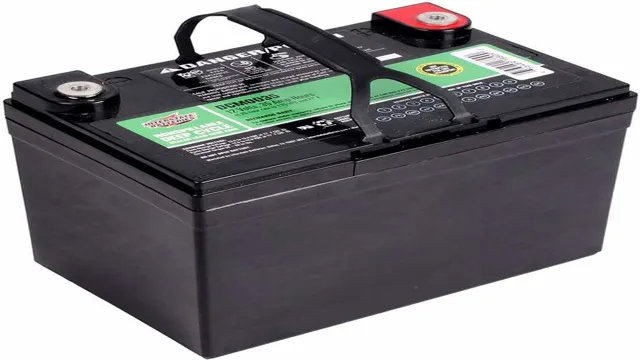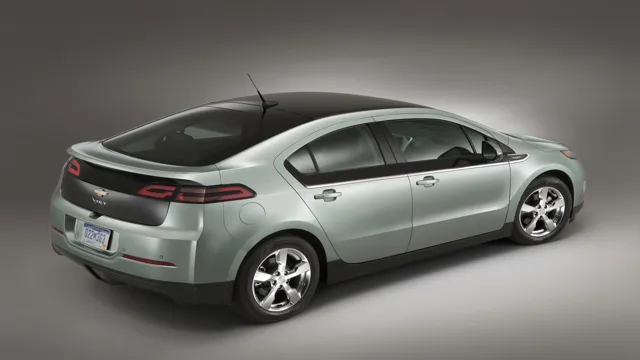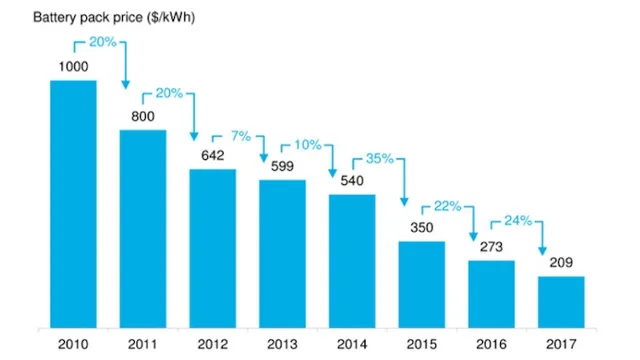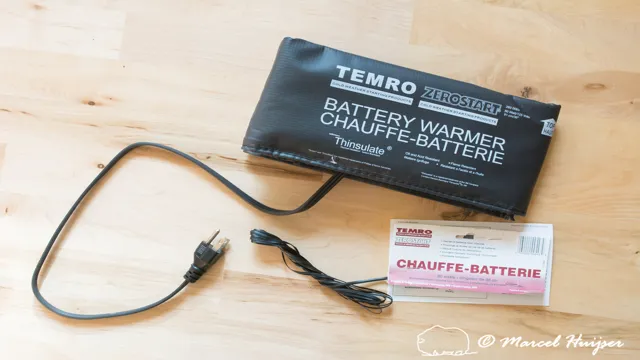Rev up Your DIY Game: How to Build Your Own Electric Car Battery Module
Are you interested in joining the eco-friendly revolution by building your own electric car? One of the most important components of an electric car is the battery module, which stores the energy needed to power the vehicle. With a little bit of knowledge and some DIY skills, you can build your own electric car battery module from scratch. By building your own battery module, you have control over the quality and cost of the materials used.
Plus, you can customize the size and shape of the battery to fit your specific car model. The process may seem daunting at first, but with the right tools and guidance, it can be a rewarding and satisfying experience. One option is to purchase a DIY electric car conversion kit, which includes all the necessary components to build a battery module.
Another option is to gather the materials and build the module yourself, utilizing online resources and instructional videos. Regardless of which approach you choose, it’s important to prioritize safety and follow proper precautions when working with electricity. Building your own electric car battery module is not only a fun project, but also a step towards a more sustainable future.
With the ability to power your own vehicle using renewable energy, you can reduce your carbon footprint and contribute to a cleaner environment. So why not start today and become a part of the electric car movement?
Introduction
If you’re an electric car enthusiast, you might have considered building your own electric car battery module. This allows you to take full control over your car’s power source and potentially increase its range. But building your own battery module can be a daunting task, especially if you’re not familiar with the inner workings of electric cars.
However, with the right guidance and tools, anyone can build their own electric car battery module. The first step is to choose the batteries that will power your module. You’ll need to calculate the voltage and capacity needed and choose batteries that meet those requirements.
Then, you’ll need to connect the batteries in series or parallel to reach the desired voltage. Finally, you’ll need to design and build a container to hold the batteries and ensure they are properly cooled to prevent overheating. With careful planning and attention to detail, you can build your own electric car battery module and take control of your vehicle’s power source.
Why Build Your Own Moduler?
When it comes to building your own modular, there are several reasons why you might want to take on such a project. Perhaps you’re looking to create a custom setup that perfectly meets your needs, or maybe you want to save money by building your own rather than purchasing pre-made solutions. Whatever your motivation, the process of building your own modular can be incredibly rewarding and can give you a greater sense of control over your setup.
Additionally, building your own modular can provide opportunities to develop your skills and explore new ideas. Ultimately, the decision to build your own modular comes down to personal choice, but it’s a challenging and rewarding endeavor for those who are interested.

Benefits of DIY Moduler
When it comes to setting up a modular system, it can be tempting to hire a professional to handle the job. However, there are numerous benefits to taking a DIY approach, especially if you enjoy working with your hands or want to save money on installation costs. One of the biggest advantages of a DIY modular system is the flexibility it offers.
You have complete control over the design and layout, which means you can create a system that perfectly suits your unique needs and preferences. Additionally, DIY modules are often more affordable than pre-built setups, allowing you to invest in high-quality components without breaking the bank. Finally, installing the system yourself can also be a rewarding and enjoyable experience, allowing you to take pride in the final result and gain valuable experience along the way.
So if you’re looking for a customized and budget-friendly modular setup, consider taking the DIY route and unlock the full potential of your space.
Requirements
Building your own electric car battery module can be a fun and rewarding experience, but it’s important to have a clear understanding of the requirements before you start. First, it’s critical that you have a solid understanding of electrical engineering principles. This will ensure that you can design and build a battery module that is both safe and effective.
Additionally, you’ll need access to the necessary equipment and tools, including a battery pack, charging circuit, and voltage regulator. Finally, you’ll need to have a good understanding of the specific requirements of your electric car and its battery management system. This will help you ensure that your module is compatible and capable of delivering the power and performance you need.
With these requirements in mind, you can start the process of building your own electric car battery module and enjoy the many benefits of driving a greener, more sustainable vehicle.
Tools and Material
When it comes to starting any DIY project, having the right tools and materials is crucial to ensuring success. For those looking to tackle a home improvement project, the requirements can vary depending on the job at hand. However, there are a few basic tools and materials that every homeowner should have on hand.
A hammer, screwdrivers, pliers, and a level are all essential building tools that can help with a wide range of jobs. Additionally, having a saw, drill, and tape measure can make a big difference in the precision of your work. When it comes to materials, there are certain staples that are good to have stocked up in advance, including sandpaper, nails, screws, and wood glue.
By having these basic tools and materials on hand, homeowners can save themselves time and money in the long run, while also ensuring a successful completion of their DIY project.
Basic Knowledge
When it comes to basic knowledge requirements in any field, the first thing to consider is education. Depending on the industry, a specific level of education may be required, whether it be a high school diploma, bachelor’s degree, or higher. Along with education, experience is another important factor in most industries.
This means having practical experience and/or training in a particular field, preferably from a reputable institution. Additionally, having a good set of soft skills is also crucial in today’s job market. This includes communication skills, teamwork, time management, problem-solving, and adaptability, among others.
Lastly, having an open mind and a willingness to learn is also important. Industries are constantly evolving, so keeping up with industry trends and advancements is crucial. Therefore, it is essential to be proactive in seeking out opportunities to gain new knowledge and skills.
Step by Step Guide
Building your own electric car battery module may seem daunting, but with the right guidance, it can be a fun and rewarding project. To begin, you’ll need to gather all the necessary materials such as lithium-ion batteries, a battery management system, and wiring components. Next, you’ll need to design and build the physical module housing.
This is where you’ll need to decide how many batteries you want to connect, the orientation, and the overall shape of the module. Once the battery module is complete, it’s time to wire it up to your car’s existing electrical system. You’ll need to carefully follow the instructions on the battery management system to ensure safe and efficient operation.
With your new electric car battery module installed, you can enjoy reduced emissions and lower fuel costs while driving your electric vehicle. By building your own electric car battery module, you can take control of your vehicle’s power source and create an eco-friendly transportation option.
Design the System
Now that you have gathered all the necessary information for your system, the next step is designing it. Designing your system involves creating a detailed plan that identifies the components you need to build the system and how they will work together. To begin, you need to identify the system’s objectives and determine the requirements necessary to meet those objectives effectively.
Once you have identified the requirements, you can start designing the architecture of the system, including hardware, software, and network components. Additionally, you need to determine the various interfaces, protocols, and APIs that will be used to allow the different components to interact with one another. Testing and ensuring the system’s performance is vital to guarantee the system’s proper functionality, and the design meets the objectives.
Finally, designing the system requires that you document the different stages of design and keep the documentation updated as the system progresses. By following these steps, you can design a system that meets your organization’s needs and is built to last.
Build the Battery Cells
To build the battery cells for your project, you’ll need a few key components and some basic knowledge of electronics. First, you’ll need the cells themselves. These can be bought pre-made or you can assemble them yourself using individual lithium-ion cells.
Once you have the cells, you’ll need to connect them together in series to create the desired voltage for your project. This is done by connecting the positive terminal of one cell to the negative terminal of the next cell until you have the desired number of cells connected in series. Next, you’ll need to connect the cells in parallel to increase the overall capacity of the battery.
This is done by connecting the positive terminals of all the cells together and likewise with the negative terminals. Finally, you’ll need to add a battery management system (BMS) to monitor the cells’ health and prevent overcharging or discharging. With these steps completed, you’ll have a functioning battery pack ready to power your project.
So, get ready to experiment and learn as you build your own battery cells and turbo-charge your projects!
Connect the Cells with Wires
Connecting cells with wires can sometimes be a tricky process, but with a little guidance, it can be done in no time at all. First, gather all the necessary materials: cells, wires, and a power source. Next, strip the ends of the wires so that the copper is exposed and ready to be attached to the cells.
Once the wires are prepared, connect one end of one wire to the positive side of the power source, and the other end to the positive side of one cell. Repeat this process for the remaining cells, ensuring that each positive end is connected to the positive side of the power source. After that, connect one end of another wire to the negative side of the power source, and the other end to the negative side of one cell.
Repeat this process for all of the cells, connecting each negative end to the negative side of the power source. With the wires properly connected, the cells should be ready to function as a unit and deliver power to any device or equipment that needs it.
Arrange the Cells in the Moduler
If you’re planning to build a modular home, you’ll need to know how to arrange the cells properly to ensure a smooth and efficient construction process. First, you’ll need to select the right location for your home and prepare the site for construction. Next, you’ll need to lay out the foundation and anchor the cells to it.
Once the cells are secured, you can begin arranging them according to your desired floor plan. This may require some coordination and planning, as you’ll need to account for electrical and plumbing connections, as well as any necessary adjustments to the structure. Fortunately, with careful planning and attention to detail, you can easily arrange the cells to create a beautiful and functional modular home that meets your personal style and needs.
So go ahead and get started on your dream home today!
Install the Moduler into Your Car
If you’re looking to install a moduler into your car, you might feel a bit overwhelmed at first. But don’t worry! It can actually be a fairly straightforward process if you follow a few simple steps. First, you’ll need to gather all the necessary tools and equipment, including some basic hand tools and the moduler itself.
Then, you’ll want to identify the location where you’ll be installing the moduler. This might be under the hood or inside the passenger compartment, depending on the specific make and model of your vehicle. Once you’ve identified the location, you’ll need to carefully connect the moduler to the appropriate wiring harnesses and secure it in place using the necessary mounting hardware.
Finally, you’ll want to test the moduler to make sure it’s working properly before closing everything up and hitting the road. With a little bit of patience and attention to detail, you can have your moduler up and running in no time!
Conclusion
So there you have it, folks! With the help of this guide, you can now join the ranks of electric vehicle enthusiasts and make your very own battery module. All it takes is a little bit of technical knowledge, some patience, and a whole lot of creativity. Who knows, you might even become the next Tesla-like innovator.
” “But most importantly, by building your own electric car battery module, you’re not only saving money, but also doing your part to help the environment. So what are you waiting for? Get your toolbox out, roll up your sleeves, and let’s start building!”
FAQs
What is a battery module?
A battery module is a self-contained unit that holds a group of batteries and can be used to provide power for various devices or systems.
What are the benefits of building your own electric car battery module?
Building your own electric car battery module allows you to customize the battery configuration to suit your specific needs, and it can be more cost-effective than purchasing a pre-made module.
What types of batteries can be used in an electric car battery module?
Lithium-ion batteries are the most common type of battery used in electric car battery modules due to their high energy density and long lifespan.
How do I build my own electric car battery module?
Building your own electric car battery module involves selecting the appropriate battery cells, designing a layout for the module, and assembling the cells into the module using appropriate wiring and connectors. It is important to follow proper safety guidelines and consult with experts in the field to ensure a safe and effective build.







